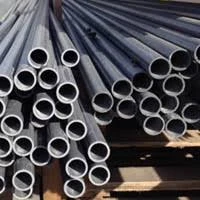
-
 Afrikaans
Afrikaans -
 Albanian
Albanian -
 Amharic
Amharic -
 Arabic
Arabic -
 Armenian
Armenian -
 Azerbaijani
Azerbaijani -
 Basque
Basque -
 Belarusian
Belarusian -
 Bengali
Bengali -
 Bosnian
Bosnian -
 Bulgarian
Bulgarian -
 Catalan
Catalan -
 Cebuano
Cebuano -
 China
China -
 China (Taiwan)
China (Taiwan) -
 Corsican
Corsican -
 Croatian
Croatian -
 Czech
Czech -
 Danish
Danish -
 Dutch
Dutch -
 English
English -
 Esperanto
Esperanto -
 Estonian
Estonian -
 Finnish
Finnish -
 French
French -
 Frisian
Frisian -
 Galician
Galician -
 Georgian
Georgian -
 German
German -
 Greek
Greek -
 Gujarati
Gujarati -
 Haitian Creole
Haitian Creole -
 hausa
hausa -
 hawaiian
hawaiian -
 Hebrew
Hebrew -
 Hindi
Hindi -
 Miao
Miao -
 Hungarian
Hungarian -
 Icelandic
Icelandic -
 igbo
igbo -
 Indonesian
Indonesian -
 irish
irish -
 Italian
Italian -
 Japanese
Japanese -
 Javanese
Javanese -
 Kannada
Kannada -
 kazakh
kazakh -
 Khmer
Khmer -
 Rwandese
Rwandese -
 Korean
Korean -
 Kurdish
Kurdish -
 Kyrgyz
Kyrgyz -
 Lao
Lao -
 Latin
Latin -
 Latvian
Latvian -
 Lithuanian
Lithuanian -
 Luxembourgish
Luxembourgish -
 Macedonian
Macedonian -
 Malgashi
Malgashi -
 Malay
Malay -
 Malayalam
Malayalam -
 Maltese
Maltese -
 Maori
Maori -
 Marathi
Marathi -
 Mongolian
Mongolian -
 Myanmar
Myanmar -
 Nepali
Nepali -
 Norwegian
Norwegian -
 Norwegian
Norwegian -
 Occitan
Occitan -
 Pashto
Pashto -
 Persian
Persian -
 Polish
Polish -
 Portuguese
Portuguese -
 Punjabi
Punjabi -
 Romanian
Romanian -
 Russian
Russian -
 Samoan
Samoan -
 Scottish Gaelic
Scottish Gaelic -
 Serbian
Serbian -
 Sesotho
Sesotho -
 Shona
Shona -
 Sindhi
Sindhi -
 Sinhala
Sinhala -
 Slovak
Slovak -
 Slovenian
Slovenian -
 Somali
Somali -
 Spanish
Spanish -
 Sundanese
Sundanese -
 Swahili
Swahili -
 Swedish
Swedish -
 Tagalog
Tagalog -
 Tajik
Tajik -
 Tamil
Tamil -
 Tatar
Tatar -
 Telugu
Telugu -
 Thai
Thai -
 Turkish
Turkish -
 Turkmen
Turkmen -
 Ukrainian
Ukrainian -
 Urdu
Urdu -
 Uighur
Uighur -
 Uzbek
Uzbek -
 Vietnamese
Vietnamese -
 Welsh
Welsh -
 Bantu
Bantu -
 Yiddish
Yiddish -
 Yoruba
Yoruba -
 Zulu
Zulu
frp sheet
Understanding FRP Sheets A Comprehensive Overview
Fiber Reinforced Polymer (FRP) sheets have emerged as a revolutionary material widely used in various industries due to their unique properties and advantages. Composed of a polymer matrix reinforced with fibers (commonly glass, carbon, or aramid), FRP sheets are recognized for their exceptional strength-to-weight ratio, corrosion resistance, and versatility. This article aims to explore the significance of FRP sheets, their applications, benefits, and future potential.
Properties of FRP Sheets
One of the standout features of FRP sheets is their impressive mechanical properties. The fibers embedded in the polymer matrix provide tensile strength and stiffness, making them much stronger than traditional materials like steel and aluminum while remaining lightweight. For instance, glass fiber reinforced polymers (GFRP) are widely used in construction and infrastructure because they can outlast conventional materials under challenging environmental conditions.
Another critical property is corrosion resistance. FRP sheets do not rust or corrode, which qualifies them for use in chemical processing plants, marine environments, and even wastewater treatment facilities. This durability significantly reduces maintenance costs and extends the lifespan of structures where FRP sheets are utilized.
Applications of FRP Sheets
The application of FRP sheets spans varied industries, making them a versatile choice for engineers and architects. In the construction sector, they are increasingly employed for structural strengthening and reinforcement. FRP sheets can be bonded to existing concrete structures to increase load capacity and prevent cracking, thereby prolonging the life of buildings and bridges.
In the transportation sector, FRP sheets are used in the manufacturing of components for vehicles, aircraft, and trains. They are essential in reducing weight, which directly impacts fuel efficiency. For instance, the aerospace industry heavily relies on carbon fiber reinforced polymers (CFRP) for aircraft wings and fuselage, contributing to fuel savings and enhancing performance.
frp sheet

Moreover, FRP sheets are gaining traction in the energy sector, particularly in renewable energy applications. For example, wind turbine blades are often made from composite materials, including FRP, due to their lightweight and high strength properties. This development aids in producing larger, more efficient wind turbines capable of harnessing renewable energy more effectively.
Benefits of Using FRP Sheets
The advantages of utilizing FRP sheets are numerous. Beyond their impressive mechanical properties and resistance to corrosion, they offer additional benefits such as thermal resistance and electrical insulation. This makes FRP sheets suitable for applications where thermal stability and electrical insulation are paramount, such as electrical enclosures and heat exchangers.
Furthermore, their lightweight nature translates to easier handling and installation, which can reduce labor costs and minimize downtime during construction or maintenance work. Additionally, FRP sheets can be manufactured in various colors and finishes, offering aesthetic flexibility for architectural applications.
Future Potential of FRP Sheets
As technology advances, the future potential of FRP sheets looks promising. Research is ongoing to enhance the properties of these materials further, including improving the fiber-matrix bond and exploring new types of sustainable fibers for reinforcement. The rise of eco-friendly composites presents an exciting avenue, where renewable resources are utilized, thus addressing environmental concerns associated with traditional composites.
Moreover, with the increasing emphasis on sustainable building practices, FRP sheets are likely to play a crucial role in “green” construction initiatives. Their longevity, low maintenance, and energy efficiency align perfectly with the goals of sustainable architecture.
In conclusion, FRP sheets are a vital component in the modern material landscape. Their unique properties and extensive applications across multiple industries illustrate their importance and adaptability. As research and technology progress, the potential applications of FRP sheets will continue to expand, paving the way for innovative solutions in construction, transportation, and energy sectors. With ongoing advancements, the future of FRP technology looks brighter than ever.









